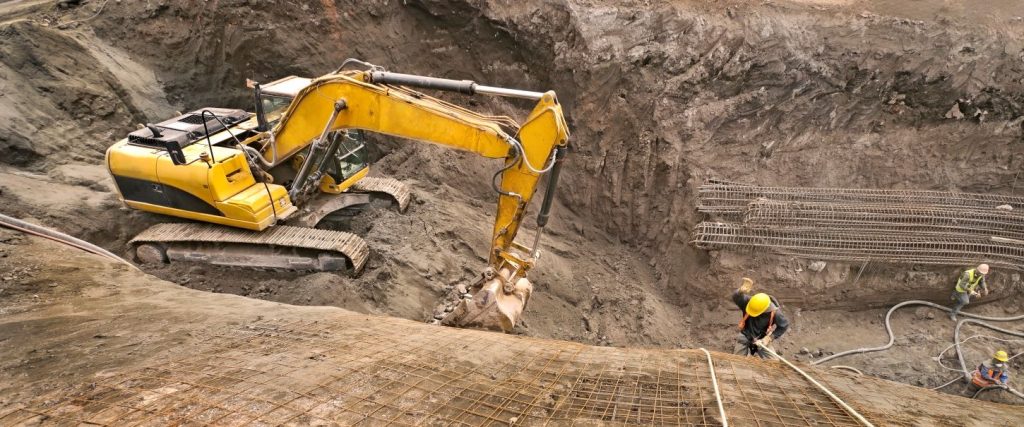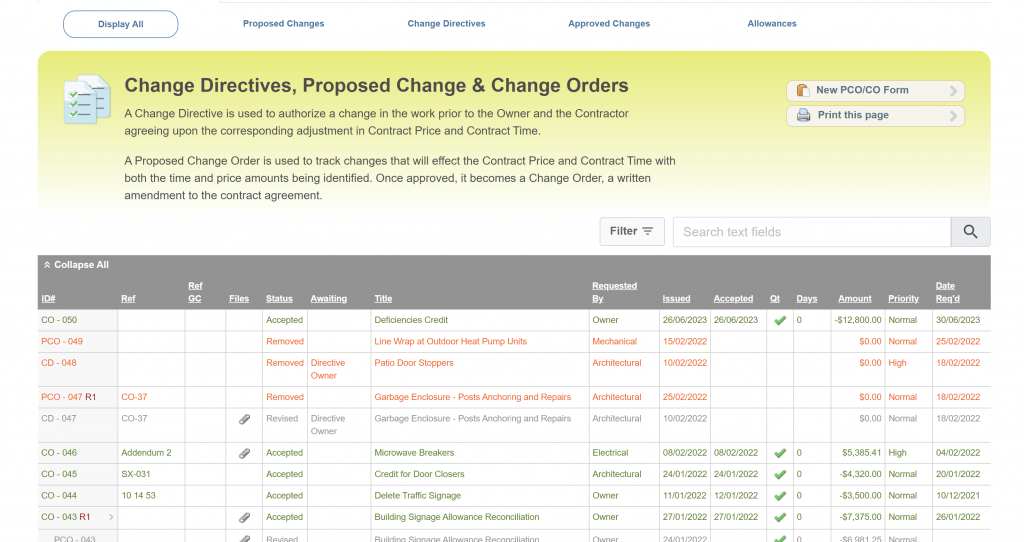Adapting on the Fly: The Role of Change Orders in Construction

In the course of a construction project for a residential complex, an unanticipated challenge arose during the foundation excavation phase. Initial soil assessments proved inaccurate, revealing a need for additional fill material and compaction to ensure the structural integrity of the foundation. What’s the next step?
In the ever-evolving world of construction, change is the only constant. From adjustments in project scope to unforeseen site conditions, change is an inherent part of the building process. And to manage these changes effectively, the construction industry relies on a crucial tool: the Change Order. In this blog post, we’ll dive into change orders, unravelling their significance, and purpose, and how they play a pivotal role in ensuring successful project management. The reality is that the only legal means of affecting changes within the contract scope, after the formal contract is signed, is the Change Order.
The Purpose of Change Orders
At its core, a change order is a formal document used in the construction industry to request, document, and approve modifications or adjustments to the original scope of work or contract agreement. These modifications can encompass changes in project specifications, design alterations, additional work, or unforeseen conditions that impact the project’s cost or timeline.
Change orders are indispensable because they provide a structured and transparent process for addressing changes that arise during construction projects. Let’s explore why they matter and how they work.
Change orders serve several vital purposes in construction projects:
1. Flexibility: Construction projects are dynamic, and unforeseen circumstances can arise at any stage. Change orders provide the flexibility to adapt to these changes without disrupting the project’s flow.
2. Scope Clarification: Sometimes, as a project unfolds, the need for clarification or adjustment becomes apparent. Change orders help define and document these changes, ensuring everyone is on the same page.
3. Budget Control: By documenting changes in a change order, project owners can control costs by clearly defining how much additional work will cost or how much will be deducted from the original contract price. And once pricing is received on a change order they have the option of proceeding with the change or not understanding full well the implications on the budget.
4. Timeline Management: Change orders also address the impact of changes on the project timeline. They outline any adjustments to the schedule that will result from the change, that may require changes in forecasting work, deliveries, etc. helping to keep the project on track.
5. Legal Protection: Change orders provide legal protection for all parties involved by documenting the agreed-upon changes and their impact on the project. Having all change orders uploaded to RForm contract administration software means that they are easily accessed by all stakeholders, leading to fewer misunderstandings and the potential for legal issues to arise. Successful project management relies on all parties knowing exactly what changes have been made and agreed upon, RForm makes smooth communication between all parties so much easier.
Creating a Change Order
“The Devil is in the details”
In order to gain a comprehensive understanding of the process, let’s delve into the intricate steps associated with the creation and implementation.

1. Identification: The need for a change order typically arises when project stakeholders, such as architects, contractors, or project owners, identify changes that are necessary or beneficial.
2. Documentation: The proposed changes are documented in detail, including their scope, cost implications, timeline adjustments, and any relevant supporting documents or drawings.
3. Request and Approval: The change order is submitted to the appropriate parties for review and approval. Normally the Change is created by the Architect or Consulting Engineer and submitted to the Contractor and his sub-contractors for pricing.
4. Review and Negotiation: In some cases, there may be negotiations over the scope, cost, or timeline adjustments outlined in the change order. These negotiations aim to reach a mutually agreeable solution.
5. Approval and Implementation: Once all parties agree on the terms of the change order, it is approved and implemented. The changes are then incorporated into the project, and work proceeds accordingly.
6. Documentation and Record-Keeping: It’s crucial to maintain meticulous records of all change orders throughout the project. This documentation helps in tracking changes, managing costs, and addressing disputes if they arise. Contract administration software such as RForm is the most effective way to manage documentation and record keeping.
Simplify the process with RForm Contract Adminstration Software
Alternatively, utilizing contract administration software like RForm can streamline this process. In RForm, the change order can be created and submitted digitally, allowing for efficient collaboration between stakeholders. The software facilitates a transparent review and approval process, with built-in tools for documentation and an audit trail. RForm also serves as a centralized platform for record-keeping, ensuring meticulous documentation of all change orders throughout the project. This alternative approach enhances communication, reduces administrative burden, and provides a comprehensive solution for managing change orders in construction projects.

The Collaborative Nature of Change Orders
Not all change orders are disruptive or lead to controversy in construction projects. In fact, some changes stem from positive developments, demonstrating the adaptability and collaborative nature of project teams. For instance, the inclusion of climate-resilient features, such as solar panels and an emergency generator, due to additional government funding midstream, serves as a testament to the project’s ability to evolve in response to unforeseen opportunities. These types of change orders not only align with project goals but also contribute to the historical documentation of a team’s flexibility and responsiveness to changing circumstances. Importantly, they account for any future reviews of additional construction costs, providing a transparent and comprehensive record of the project’s evolution.
1. Communication: Change orders facilitate clear and open communication among all project stakeholders. They ensure that everyone is informed about changes and their implications. A cloud-based contract administration software such as RForm is the best way to ensure clear communication is part of the project from the get-go.
2. Problem Solving: Change orders provide a structured process for addressing challenges and unforeseen issues that may arise during construction. They enable teams to find solutions efficiently.
3. Client Satisfaction: Keeping the client informed and involved in the decision-making process is essential for client satisfaction. Change orders allow project owners to make informed choices about project adjustments.
4. Quality Assurance: By addressing changes through change orders, construction professionals can maintain the quality and integrity of the project, meeting or exceeding industry standards.
5. Risk Mitigation: Properly executed change orders help mitigate risks associated with changes, ensuring that all parties understand the potential impacts on the project.

In the ever-evolving landscape of construction projects, mastering the intricacies of change orders is crucial for successful and adaptable project management. From identifying the need for modifications to collaborative documentation, review, and approval processes, each step plays a vital role in ensuring projects can flexibly respond to unforeseen challenges or positive opportunities.
For a comprehensive solution in managing change orders and maintaining meticulous records, consider exploring RForm at rform.ca. It simplifies the complex task of change order management, providing a streamlined platform that enhances communication, reduces administrative burdens, and ultimately contributes to the success of construction projects. Visit rform.ca to delve deeper into the world of efficient change order processes and elevate your construction project management experience.

